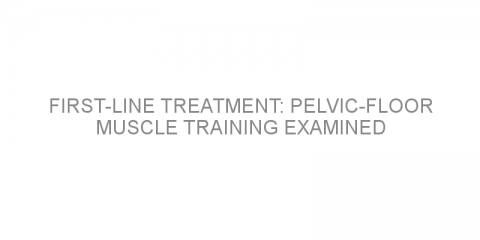In a nutshell This study examined the effectiveness of pelvic-floor muscle training in treating urinary incontinence. The authors of this study concluded that pelvic-floor muscle training is an effective first-line treatment option for urinary symptoms of any type. Some background Pelvic-floor muscle training is often the first, and most...
Read MoreUrinary incontinence Posts on Medivizor
Too old for surgery? Minimally invasive procedure to treat incontinence is still an option
In a nutshell This study examined the safety and effectiveness of ACT balloons in treating stress urinary incontinence in older patients. The researchers concluded that the ACT balloon procedure may benefit older patients experiencing urinary symptoms due to urethral dysfunction. Some background Stress urinary incontinence is often caused by...
Read MoreCould urinary symptoms be an early sign of neurological disorders?
In a nutshell This study reviewed symptoms of urinary dysfunction as early predictors of neurological disorders. Researchers concluded that an increased awareness of the signs and symptoms which require further neurological evaluation is needed. Some background Urinary symptoms may have various causes, including neurological disorders of the...
Read MoreAcupuncture: An alternative treatment for overactive bladders?
In a nutshell This study reviewed evidence on acupuncture as an alternative treatment option for overactive bladders. The authors concluded that early findings on acupuncture treatment are promising, but additional high-quality evidence is needed. Some background An overactive bladder is a common cause of urinary incontinence. First-line drug...
Read MoreCan pelvic-floor muscle training improve outcomes of other treatments?
In a nutshell This study evaluated a possible benefit of combining pelvic-floor muscle training with other active treatments used for urinary incontinence. Researchers concluded that there is not enough evidence to support, or refute, a benefit of adding pelvic-floor muscle training to other active treatments. Some background Pelvic-floor...
Read MoreFive years on: Two vaginal sling procedures compared
In a nutshell This long-term study compared two surgical techniques used to treat stress urinary incontinence in women. Researchers concluded that the transobturator tape (TOT) surgery is, overall, as safe and effective as the current standard-of-care. Some background Vaginal sling procedures are the most common type of surgery used to help...
Read MoreCan decaffeinated coffee really make a difference?
In a nutshell This study examined the effects of coffee consumption on urinary symptoms. The authors concluded that high caffeine intake is associated with increased urinary frequency and urgency. Some background It is believed that high caffeine intake can cause or exacerbate urinary incontinence. However, evidence to this effect is mixed, with...
Read MoreCombining surgeries for prolapse and incontinence
In a nutshell This study examined combining pelvic prolapse repair surgery with vaginal sling procedures in an attempt to reduce urinary incontinence after surgery. Researchers concluded that the risk of incontinence after surgery was significantly reduced by combining the two procedures. Some background Many women undergoing surgery for pelvic...
Read MoreSecond time around: Repeated vaginal sling surgery
In a nutshell This study examined the long-term effectiveness of repeated (second) vaginal sling surgery in women with continued urinary incontinence. Researchers concluded that a repeat sling procedure is an effective treatment option for women after an unsuccessful first surgery. Some background Vaginal sling procedures are currently the most...
Read MoreIs Botox a good long-term treatment for patients with overactive bladders?
In a nutshell This long-term study examined the safety and effectiveness of botulinum toxin A (onabotulinumtoxinA, OnabotA, or Botox) in the treatment of urinary incontinence in patients with overactive bladders. Researchers concluded that OnabotA consistently improves urinary incontinence due to bladder muscle over-activity. Some background...
Read MoreCan nerve stimulation improve urinary function in multiple sclerosis?
In a nutshell This study examined the effectiveness of nerve stimulation in the treatment of urinary incontinence in patients with multiple sclerosis. Researchers concluded that pelvic nerve stimulation (following the LION procedure) can improve symptoms of urinary incontinence in some cases of multiple sclerosis. Some background The LION...
Read MoreSacral nerve stimulation: is intermittent stimulation just as effective?
In a nutshell This study examined a new variation of sacral nerve stimulation used to treat persistent urge urinary incontinence. Researchers concluded that intermittent sacral nerve stimulation was as effective as continuous stimulation in treating urge urinary incontinence. Some background Sacral nerve stimulation (SNM) is a type of...
Read More












